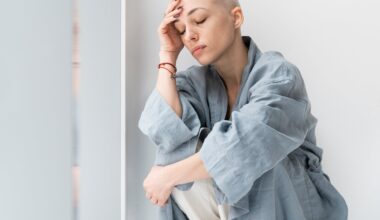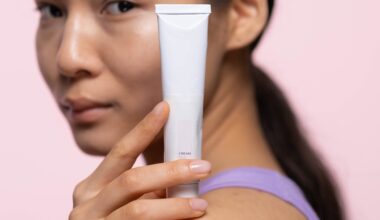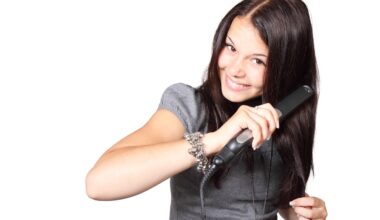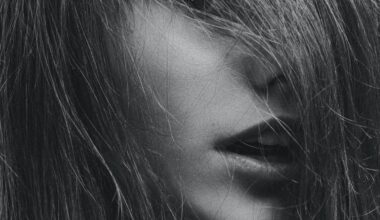Introduction
For decades, the quest for sleek, straight hair has led many to the salon chair, eagerly awaiting the transformative powers of hair relaxing treatments. This chemical process promises to turn even the curliest locks into smooth, straight strands. But like any beauty treatment, hair relaxing comes with its set of questions: How long will the results last? What’s the cost of this hair transformation? And perhaps most importantly, is it safe for your hair? In this comprehensive guide, we’ll pull back the curtain on hair relaxing, providing insights on its duration, associated costs, and diving into the heated debate about its impact on hair health.
How Long Does Hair Relaxing Last?
Stepping out of the salon with that fresh, relaxed hair look can give you a confidence boost like no other. But the pressing question on everyone’s mind is, “How long will this silky smooth look last?” Let’s explore.
Duration of Hair Relaxing: Typically, a hair relaxing treatment can last anywhere from 6 to 10 weeks. But why such a range? Several factors influence its longevity:
- Hair Growth Rate: Everyone’s hair grows at a slightly different rate. The faster your hair grows, the sooner you’ll see the natural texture at your roots, indicating it might be time for a touch-up.
- Hair Type and Texture: Curly or coiled hair might not stay relaxed as long as hair with looser waves. The more potent the natural curl, the more likely it is to revert.
- Hair Care Post-Treatment: The way you care for your hair after the treatment significantly impacts how long the results will last. Using sulfate-free shampoos, deep conditioning, and avoiding heat styling can extend the longevity of your relaxed hair.
In essence, while hair relaxing offers a reprieve from daily styling struggles, maintaining the look requires commitment and care. Your hairstylist can give you a more accurate timeline based on your specific hair type and needs.
Understanding the Costs of Hair Relaxing
For many, the allure of straight, manageable hair is irresistible. But before you delve into the world of hair relaxing, it’s essential to understand the financial commitment involved. Let’s break down the costs associated with this popular hair treatment.
Factors Influencing Hair Relaxing Cost:
- Salon Reputation and Location: The salon’s prestige and location play a significant role in determining the cost. High-end salons in upscale urban neighborhoods or those with celebrity endorsements will likely charge more.
- Hair Length and Thickness: The amount of relaxer needed varies based on hair length and density. Longer and thicker hair might require more product, leading to a higher cost.
- Type of Relaxer Used: There are different hair relaxing formulas available, ranging from lye to no-lye relaxers, and some specialty formulations. The type of relaxer can influence the cost.
- Additional Services: Some salons offer a package that includes post-relaxer treatments, trims, or styling. It’s essential to inquire about what’s included in the price.
- How much is hair relaxing: Costs can vary widely based on the factors mentioned. On average, you might find prices ranging from $50 to $250 or even more, depending on the salon and the services offered.
- How much hair relaxing cost: As reiterated, expect to pay anywhere from $50 to $250+, with the price influenced by salon reputation, hair length, type of relaxer, and additional services.
It’s worth noting that while price is an essential factor, it shouldn’t be the sole determinant. Researching salon reviews, seeking recommendations, and considering the stylist’s expertise is crucial for a satisfactory and safe hair relaxing experience.
Hair Relaxing: Is It Harmful to Your Hair?
Every woman’s dream of flaunting silky, straight locks has driven the popularity of hair relaxing treatments for decades. However, as with any chemical process, there’s been a buzzing debate about its safety and impact on hair health. Let’s delve into the two sides of this ongoing debate.
The Case Against Hair Relaxing:
- Chemical Composition: Hair relaxers break the natural bonds in the hair shaft using chemicals. Frequent exposure to these chemicals can weaken hair over time, leading to breakage and split ends.
- Scalp Irritations: Some individuals may experience itching, burns, or even sores on their scalp after a relaxing treatment, especially if left on for too long or not adequately rinsed.
- Potential for Hair Loss: Over-processing, or relaxing hair too frequently, can lead to thinning and in some cases, irreversible hair loss.
The Case for Hair Relaxing:
- Manageability: For those with extremely curly or coiled hair, relaxing can make hair more manageable, reducing the time spent on daily styling.
- Improved Appearance: Many find that relaxed hair provides a sleek, polished appearance that boosts their confidence.
- Advancements in Formulas: Modern relaxers have come a long way. Many brands now incorporate nourishing ingredients to mitigate potential damage, ensuring the hair remains as healthy as possible.
- Why relaxing hair is bad: As outlined above, the primary concerns revolve around the chemical nature of the treatment, potential for scalp irritations, and the risk of hair loss with over-processing.
In conclusion, while hair relaxing can offer beautiful, straight locks, it’s vital to weigh the benefits against the potential risks. Consulting with a seasoned hairstylist, doing a patch test, and following aftercare instructions can make the difference between a lustrous mane and a hair disaster.
Hair Relaxing Aftercare: How to Maintain Relaxed Hair
After going through a hair relaxing treatment, the journey isn’t over. Proper aftercare is crucial in ensuring that the results of the treatment last, and more importantly, that your hair remains healthy and vibrant. Let’s dive into the best practices for taking care of relaxed hair.
- Moisturize Regularly: Relaxed hair tends to be drier than natural hair. Hence, it’s imperative to hydrate and moisturize the strands routinely. Invest in a high-quality leave-in conditioner and consider doing deep conditioning treatments every couple of weeks.
- Avoid Heat Styling: While it might be tempting to add some curls or extra straightening to your newly relaxed hair, it’s best to give it a break from additional heat for a while. This helps to prevent unnecessary damage and breakage.
- Limit Manipulation: Try to avoid hairstyles that tug or pull at the roots. Styles like tight ponytails, braids, or buns can stress the hair shaft, leading to potential breakage at the weakest points.
- Protein Treatments: Relaxed hair might benefit from occasional protein treatments. These treatments help to strengthen the hair and restore some of the bonds broken during the relaxing process.
- Trim Regularly: To keep your relaxed hair looking its best, get regular trims. This helps to eliminate split ends and promotes healthier hair growth.
- Use Gentle Hair Products: Stick to sulfate-free shampoos and avoid products with harsh chemicals. These can strip the hair of essential oils and further dry out relaxed hair.
- Protect Your Hair at Night: A satin or silk pillowcase or headscarf can help reduce friction, which can cause breakage or frizziness in relaxed hair.
Relaxed hair, when cared for properly, can be a beautiful expression of style and confidence. The key lies in nurturing it post-treatment and ensuring it remains healthy, strong, and radiant.
Conclusion
Hair relaxing is more than just a beauty trend; it’s a personal choice many make to redefine their hair’s texture and style. Like all choices, it comes with its own set of considerations. From understanding the longevity of the treatment to weighing the costs and potential impact on hair health, a well-informed decision is key.
Hair relaxing treatments can offer transformative results, turning curly or wavy tresses into sleek, straight locks. Yet, it’s paramount to acknowledge the potential implications, both positive and negative. By understanding the intricacies of the treatment and committing to proper aftercare, you can enjoy the benefits of relaxed hair while minimizing potential risks.
Choosing hair relaxing is, at its core, an intimate and personal decision. It’s essential to prioritize your hair’s health and consult with trusted hairstylists to ensure the best possible results. Ultimately, whether it’s through relaxing or any other treatment, every individual deserves to feel confident and radiant in their unique hair journey.
Additional Resources
For those keen to delve deeper into the realm of hair care and hair relaxing treatments, the following resources can provide invaluable insights:
- Books:
- “The Science of Black Hair” by Audrey Davis-Sivasothy
- “Hair Story: Untangling the Roots of Black Hair in America” by Ayana D. Byrd and Lori L. Tharps
- Websites:
- American Academy of Dermatology: Comprehensive resources on hair care and treatments.
- Naturally Curly: A community-driven site offering insights on various hair treatments and styles.
- Videos:
- Expert consultations and tutorials on YouTube from renowned hairstylists and hair care enthusiasts.
- Local Workshops: Many communities host hair care workshops or events where you can learn firsthand from experts, get product recommendations, and share experiences with others.
Arming oneself with knowledge, expertise, and a supportive community can transform the hair relaxing journey into an empowering and enriching experience.
This concludes our deep dive into “Hair Relaxing: Duration, Costs, and the Debate on Its Impact.” Remember, your hair, your choice. Prioritize its health and shine on!






